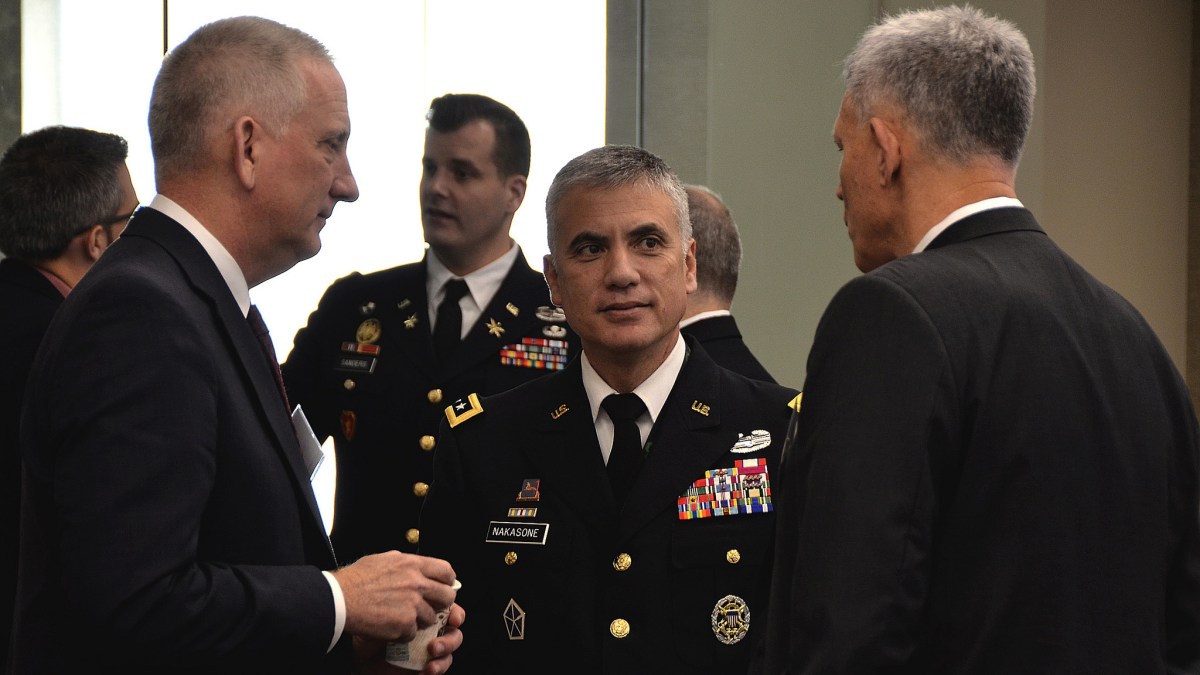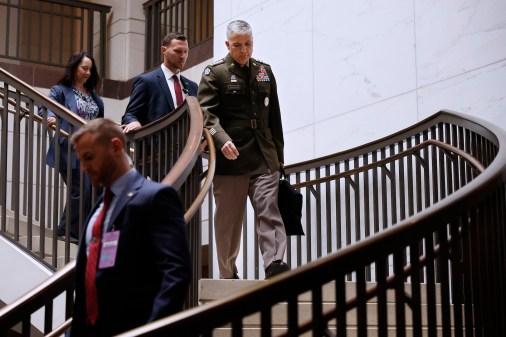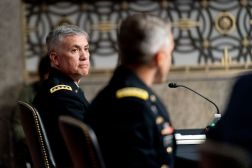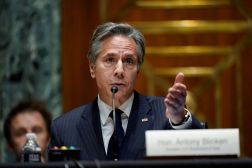The NSA now officially has a new chief

Gen. Paul Nakasone, an experienced military leader with a unique background in cyber-operations and intelligence gathering, has been approved to take over the National Security Agency and U.S. Cyber Command.
The Senate confirmed Nakasone, who currently leads Army Cyber Command, by voice vote Tuesday morning. The promotion was expected for months and faced little opposition, but like most things in the Senate, it took some time to schedule. President Donald Trump nominated Nakasone for the job on Feb. 13.
A change of command ceremony is scheduled for next Friday, May 4.
The previous NSA chief, Adm. Michael Rogers, is expected to officially retire soon after having served for four years at the top of the spy agency. During his tenure, the NSA attempted a massive reorganization effort known as “NSA21,” which combined certain components of the NSA’s defensive and offensive cyber teams for the first time.
The current hierarchy, approved by Congress, prescribes that the leader of NSA is also simultaneously the head of U.S. Cyber Command, a still-nascent cyberwarfare unit that’s responsible for supporting soldiers in the battlefield with the help of hacking tools. The fate of this so-called “dual hat” role could be decided by the end of 2018, based on a specific provision written into the 2018 National Defense Authorization Act. The NSA and Cyber Command are both housed at the Fort Meade military base in Maryland.
As CyberScoop previously reported, managing both organizations can be especially difficult because the NSA and Cyber Command hold different equities. The NSA’s central job is to covertly collect intelligence, while Cyber Command’s job is to ensure that cyberthreats are stopped and soldiers can accomplish their missions. Sometimes these overlapping objectives collide, current and former U.S. officials say.
In addition to assisting combatant commanders around the globe, U.S. Cyber Command is also responsible for protecting Defense Department networks. Congress, the Pentagon and the White House are discussing whether the command’s existing authorities should be expanded to include other things, CyberScoop previously reported. This could one day mean that soldiers are protecting some private sector networks.
Such a shift would give Nakasone novel authorities that no former director has ever enjoyed.
Beyond organizational changes though, other challenges will meet the new chief.
He arrives at Fort Meade at an especially important time. Lawmakers and the broader public are becomingly increasingly aware of cyberthreats. Current and former senior U.S. officials predict Russia will once again attempt to meddle in the 2018 and 2020 elections. Meanwhile, the Chinese, Iranian and North Korean governments have developed talented hacking teams in recent years that are capable of causing mayhem.
While those threats loom, past NSA directors have voiced concerns about the agency’s ability to retain top talent. And high-profile leaks of national security secrets have only further plummeted morale.





